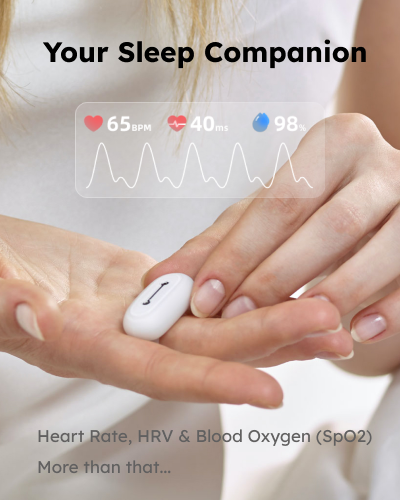Blood Oxygen during Sleep: 6 Things You Need to Know -Sleepon
During sleep, our bodies release carbon dioxide (CO2) into the air. This gas helps keep our lungs clear by making the mucus that lines them thicker. As CO2 builds up in the body, it causes the blood vessels to constrict, which lowers the amount of oxygen available to cells.
How Much Oxygen is in Our Bodies?
We need oxygen to live. It’s an essential component of our bodies. And yet, we only use about 5% of the oxygen that enters our lungs each day. This means that 95% of the air we inhale goes unused.
In addition, the amount of oxygen in our body depends on several factors, such as age, gender, physical activity level, and health conditions. For example, older people tend to breathe less deeply than younger adults because they have fewer red blood cells. Women typically have lower levels of hemoglobin (the iron-containing molecule that carries oxygen) than men. And people who exercise regularly tend to breathe faster and deeper than those who lead sedentary lifestyles.
Understand Blood Oxygen during Sleep
Blood oxygen levels during sleep should be at a 95 percent saturation, which is considered normal, according to the American Sleep Apnea Association (AASM).
It is normal for blood oxygen levels to decrease during sleep. All body systems have altered basal function during your sleep, including breathing. You don’t breathe as deeply when you are sleeping, and not all your lung spaces function at full capacity.

Because of this effect of sleep on breathing, it is normal for your sleep oxygen level to decrease below awake levels. Tests that show a waking oxygen level at or above 94 percent typically indicate a sleep oxygen level of at or above 88 percent.
Learn more about Blood Oxygen during Sleep
The Importance of Breathing While Sleeping
If you’re not breathing properly while sleeping, you won’t receive enough oxygen to help your brain function at its peak. In fact, studies show that people who breathe through their mouths during sleep are more likely to suffer from insomnia than those who breathe through their noses.
When Should You Wake Up?
The National Sleep Foundation recommends going to bed and waking up around the same time every day. That means getting up between 6 am and 7 am.
However, if you wake up feeling tired, you should probably go back to sleep. Besides that, there are some situations where waking up early might not be such a bad idea. For instance, if you work night shifts, you might find yourself having trouble falling asleep at night. In this case, getting up earlier than usual might help you feel more rested. To sleep faster and stay asleep longer, you can try to go to bed later than usual.
The Importance of Tracking Your Blood Oxygen during Sleep
When your blood oxygen persistently drops below maintenance levels, health problems can develop.
In addition, certain medical conditions can lead to low oxygen while you are asleep:
- Sleep disorders, such as bouts of insomnia
- Poor sleep quality, such as restless sleep with several awakenings
- High blood pressure
- Cardiovascular disease including heart failure
- Cardiac arrhythmia and a risk for sudden death
- Type 2 diabetes
- Depressed brain function and possible brain damage
- Risk for loss of consciousness, coma, and death
That’s why you may need a sleep tracker that provides rich sleep data, so that you can keep your sleep health on track.
Named as the best sleep tracker with sleep reports by Sleep Foundation, Sleepon Go2Sleep is best for you if want in-depth health and sleep data, if you’re looking for a ring-style tracker, or if you’re a value seeker to understand your sleep patterns.
Sleepon Go2Sleep is a wearable silicone ring that weighs only 6 grams; it alerts you of abnormal heart and oxygen levels; and it provides you with data that includes ten different metrics.
Sleepon Go2Sleep is a wearable silicone ring that weighs only 6 grams; it alerts you of abnormal heart and oxygen levels; and it provides you with data that includes ten different metrics.
How to Increase Blood Oxygen Levels during Sleep
There are several ways to increase blood oxygen levels during sleep.
One is to exercise regularly. Exercise helps improve circulation, which improves blood flow throughout the body. This means that exercising will help keep your blood flowing through your brain and other organs while you sleep.
Another way to increase blood oxygen levels is by eating foods rich in iron. Iron is an essential nutrient that plays a role in transporting oxygen throughout the body. Foods high in iron include red meat, poultry, fish, beans, lentils, spinach, and fortified cereals. Once inside your bloodstream, the iron travels to your cells where it binds to hemoglobin molecules. Hemoglobin is responsible for carrying oxygen throughout your body. If there is too little iron in your system, then your body cannot absorb enough oxygen from the air. As a result, you feel tired and lack energy.
Conclusion
Blood oxygen is highly important for your sleep because its level shows the quality of your sleep health. If the level is below 88 on your sleep tracker, like Sleepon Go2Sleep then it’s a better idea to find solutions, including doing exercises and eating foods rich in iron.
ALL ARTICLES
Subscribe Us
Products
Company
Copyright © SLEEPON. All rights reserved.
SLEEPON keeps both Sleeponhealth and Sleepon.us due to the brand upgrading. We promise to provide the same products and service in both sites.








Leave a Reply